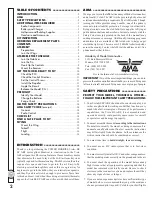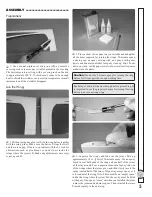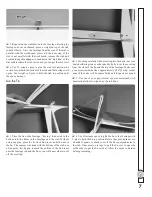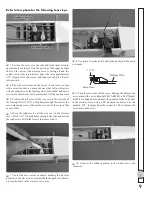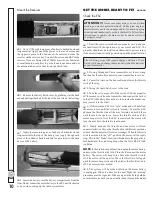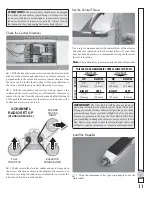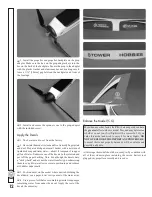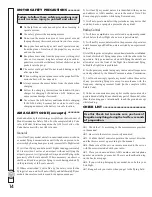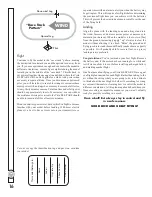
16
WIND
Pilot
“Race Track
Pattern”
Downwind Leg
Upwind Leg
Flight
Continue to
fl
y the model in the “race track” pattern, making
the downwind turn toward you and the upwind turn away from
you. If you are experienced enough and can control the model in
different orientations, execute
fi
gure eights turning the model
toward you in the middle of the “racetrack.” Throttle back or
cut power altogether when you get to an altitude where the Vista
BL EP ARF will be able to glide for a while. Add power when
necessary to regain altitude. Once you become an experienced
pilot, you will learn how to search for rising air currents where
motor power will no longer be necessary to remain aloft for ten,
twenty, thirty minutes or more. Total run time under full-power
should be approximately four to
fi
ve minutes, so even without
the assistance of rising air currents, the Vista BL EP ARF should
be able to remain aloft for at least six minutes.
Mind your battery power level, but use this
fi
rst
fl
ight to become
familiar with your model before landing. With most electric
planes it is best to have a timer set on your transmitter or a
separate timer with an alarm to alert you when the battery may
be getting low. This will require a few
fl
ights before determining
the maximum
fl
ight time you can achieve with the batteries.
This will prevent the downwind auto motor cutoff over the end
of the
fl
ying
fi
eld.
Landing
Align the plane with the landing zone and always land into
the wind. Increase or decrease motor power as necessary to
maintain your descent. When the model is a foot or two [.5m]
from the ground, increasingly apply “up” elevator to slow the
model without allowing it to climb. “Skim” the ground until
fl
ying speed is lost and the model
fi
nally touches down as gently
as possible. It will probably skid for several feet, so a grassy
landing area is preferred.
Congratulations!
You’ve just made your
fi
rst
fl
ight. Remove
the battery and, if the motor has been running for a while and
is still warm, allow it to cool before installing a charged battery
and making another
fl
ight.
One
fi
nal note about
fl
ying your Vista BL EP ARF. Have a goal
or a
fl
ight plan in mind for each
fl
ight. Rather than taking to the
air without knowing what you are going to do, take a minute
to think about the next
fl
ight–whether it’s searching for rising
air currents (thermals) or learning how to control the model in
different orientations. A little planning ahead should keep you
from executing an impulsive maneuver you weren’t actually
ready for possibly resulting in a crash.
Have a ball! But always stay in control and fl y
in a safe manner.
GOOD LUCK AND GREAT FLYING!
Cut out or copy the identi
fi
cation tag and put it on or inside
your model.
This model belongs t
o
:
Name
A
ddr
ess
Cit
y, Stat
e,
Zip
Phone Number
AM
A Number

